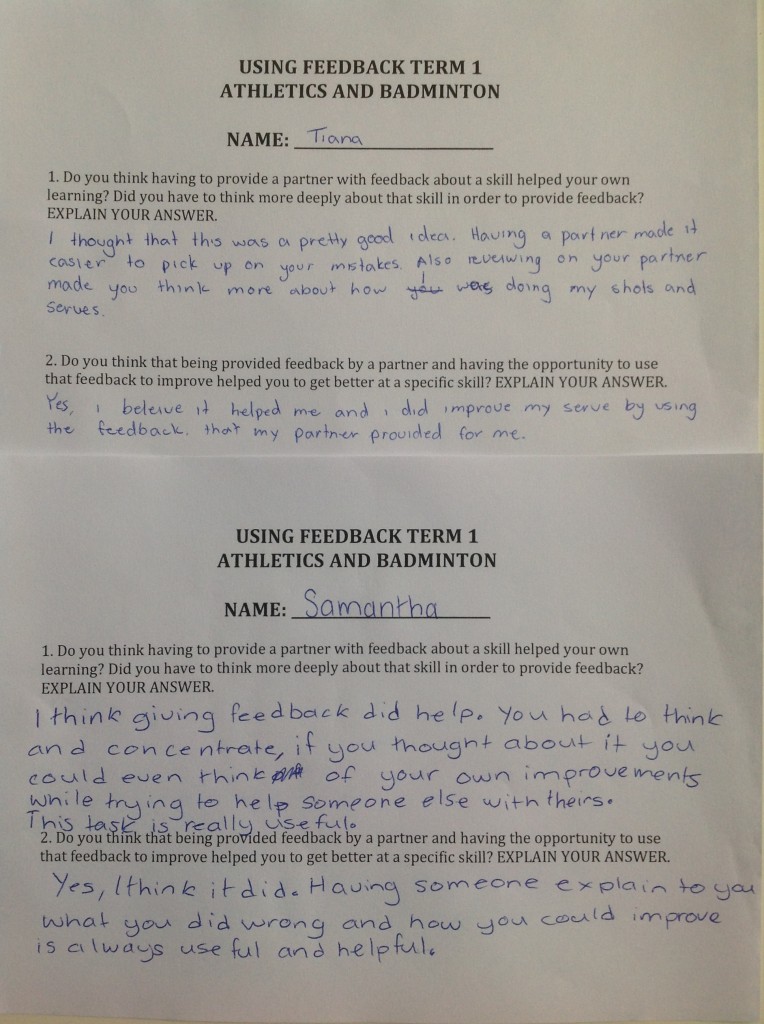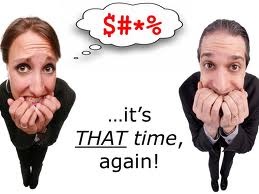At some point this term you should be meeting with your Line Manager to talk about your professional learning. I must admit that in terms of professional learning their is a lot going on when you consider:
- Australian Curriculum
- Learning Design
- TfEL
- Professional Standards
- Formative Assessment
- Classroom observations
- Organising and using student feedback
- All the other things (outside of whole school & DECD expectations) that individual teachers have taken on to improve and develop their teaching including Anne Baker, literacy initiatives, developing the use of iPads, visiting other school sites, programming, record keeping etc….
Some of the above you will have engaged in deeply while other areas you will be aware of and consider from time to time while some you may not have thought about all year.
We can’t possibly be looking at all of these things in depth all the time but it is important that at different times through the year and in following years we continue to revisit and develop our knowledge of all of them.
If like me at times you are feeling overwhlemed with all the day to day expectations plus all of the above remember the following:
We should expect professional learning and changes to our practice to take time, it will not happen quickly if it is going to happen properly. The expectation is not that you master everything now but just that you continue to learn and move forward over time.
The purpose of this post is to revisit classroom observations and student feedback. As a school we have made a clear decision to undertake two classroom observations during the year (minimum) and receive feedback from students twice as well. This information can be found on page 2 of our Professional Development Foundation Document in your (white) Teacher Professional Development folder.
The remainder of the post will be split into two, 1. Classroom Observations and 2. Student Feedback.
Classroom Observations
Our observation process can be found on page 3 of the Foundation Document. Briefly though it looks like this:
1. Pre observation meeting – meet and discuss purpose of observation.
2. Observation of lesson (could be a part or whole lesson).
3. Immediate feedback if possible (that day). This is surface feedback focusing on what was seen to help student learning.
4. Follow up meeting. Within 1-2 days the observer needs to provide detailed feedback from the lesson. Discussions need to occur around how can this feedback be used to improve student learning and is there the possibility to expand knowledge in this area ie. visit another site, observe another teacher or attend T&D. Decisions about further observations also need to occur.
Observations may occur in one of 3 ways:
1. A teacher invites a peer to observe a lesson and provide feedback.
2. A teacher approaches a peer and asks if they can observe them teach a lesson.
3. A combination of 1 & 2.
Types of classroom observation
There are a variety of procedures for undertaking classroom observations including instructional rounds, learning walks, instructional coaching, videoing practice and peer observation. Each have their purpose but the one we have used to this point is Peer Observations (learning from each other).
Purpose of Peer Observations (excerpt from Looking at classroom practice – aitsl)
The purposes of peer observation include the development of self-awareness of one’s own teaching and the opportunity to gain feedback on one’s teaching.
The practice also supports the sharing of ideas and expertise and the discussion of challenges and concerns. Peers can provide an objective view of the practice, gather information that the teacher who is teaching the lesson might not otherwise be able to do and provide feedback on identified areas. It can also be designed to support the school’s instructional framework by establishing a focus for peers to observe and be observed.
Focus of Peer Observations (excerpt from Looking at classroom practice – aitsl)
A teacher or other observer watches a lesson in order to gain an understanding of some aspect of teaching, learning or classroom interaction. Context will always determine the specific approach. This can range from a non-judgemental process involving two or more peers who mutually benefit from the dialogue that takes place to more formalised approaches that connect to teacher performance processes. The data gathered and process undertaken can also be used as evidence in teacher performance and development processes.
Observations can work two ways.
Click here to view the entire Looking at classroom practice document.
Student Feedback
If we are expected to seek feedback from students about our learning are there expectations about how we do this? The answer, yes and no.
Yes in that whatever method you use to get feedback from your students it needs to target specific aspects of your teaching and is important to student learning. Suggestion – use TfEL to help you design a question or questions or design your own questions to get specific feedback from your students about an aspect of your teaching, i.e. formative assessment. And no in that there is no expectation to use a standard proforma, the TfEL surveys or the TfEL Compass tool.
I will share with you two methods that I have used this year with my Year 9/10 HPE class. One is very formal and provides more in-depth feedback (the TfEL Compass Tool) and one is less formal and provides limited but targeted feedback (two questions relating to a peer feedback task we did in PE).
Less formal student feedback – two questions targeting a specific aspect of my term 1 9/10 HPE course
Below are to examples of feedback that I sought from students regarding the use of peer feedback and if they found this useful for their learning.
More formal and detailed feedback – TfEL Compass Tool
There are 6 different surveys that you can use within this tool. Most are structured with the ability to focus on one TfEL Domain or Domains 2 – 3 all in one survey. Each allows you to add one personalised open ended question. One survey allows you the flexibility to pick and choose what Elements and Domains you would like covered in the survey. Once a survey is created a Code and web link is created. These can then be used by students to access the survey.
The Compass Tool collates the information and will continue to collate all information together as more surveys are completed. Surveys can be sent to and come under the following headings – Teacher self reflection, Observer trusted colleague, Observer line manager, Students older, Students younger, Students early years and Observer researcher. My survey data reflects only two of these areas, Teacher self reflection and Students older.
The Domain I chose was the following:
My results in the Quality Tests view looked like this:
What are Quality Tests?
Rather than just test how often something is done the questions and surveys are designed to dig deeper into your teaching. My results above are in a very basic form on a sliding scale. The survey however lets me view my results against four quality tests. These tests are:
Intentionality
This item assesses your clarity about what you want students to learn and your clarity about how you will help them learn it.
Effectiveness
This item assesses how effective your strategies and approaches were in achieving your intended outcomes for all students.
Consistency
Responsiveness
This item assesses whether you are responding to what’s happening and adapting accordingly. It assesses whether you are reading the cues when there is understanding/misunderstanding, engagement/disengagement and whether there is an appropriate level of challenge for each student.
Below is my data for 2.1 Developing democratic relationships using the four quality tests. The Compass Tool has provided me with suggestions for improvement in each of these areas.
The Compass Tool provides some fairly explicit feedback providing us with plenty to consider in terms of improving our teaching.
So prior to meeting with your line manager this term you may want to strongly consider:
1. When do I want to do my classroom observations?
2. How will I get feedback from students?
3. When will I get feedback from students?
4. In what areas do I want feedback from my students?
5. How do I intend to use my feedback?










